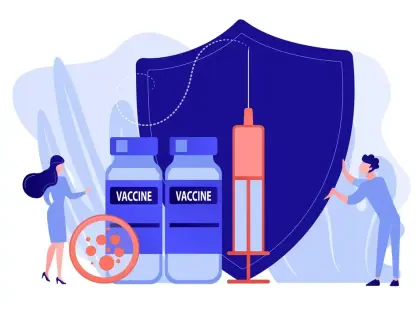The ongoing dilemma of rural hospital closures in Texas reveals a critical challenge for the state’s healthcare system, requiring urgent attention. Hospitals in rural communities serve as indispensable pillars of both health services and local economies, offering emergency care, routine medical assistance, and providing employment. Their presence is especially vital in Texas, where geographic expanses can mean life or death in emergencies, as patients often must travel long distances to access medical care facilities. Despite their importance, these hospitals face severe threats from rising operational costs, staff shortages, and complex federal regulations. These adversities create an environment where patients are often deprived of necessary care, affecting community well-being and economic stability.
Recognizing the gravity of this situation, Texas’s policymakers and healthcare leaders are prompted to search for solution-oriented approaches that can avert further closures. Efforts must focus on comprehensive strategies that offer both short-term relief and long-term sustainability to ensure these rural hospitals continue to function as lifelines for their communities. This challenge demands a collective commitment to innovative healthcare models, investment in technology like telemedicine, and regulatory reforms tailored to the unique circumstances of rural settings. As such, sustaining rural hospitals is not just a matter of preserving healthcare access but also ensuring the vibrancy and identity of rural Texas communities, safeguarding cultural heritage, and maintaining local economic ecosystems.
The Role of Rural Hospitals in Texas
Rural hospitals are lifelines that serve vast areas with limited medical options, providing essential healthcare access to people who might otherwise face prohibitive distances to urban centers. These hospitals are not just about providing medical services; they are ingrained in the social and economic fabric of rural communities. They often become community hubs, with healthcare professionals who serve as both primary caregivers and trusted local figures. This deep integration into community life underscores their role beyond healthcare, contributing significantly to local economies by providing jobs and supporting nearby businesses.
Beyond economic contributions, these hospitals hold cultural significance as they often align with local values of independence, self-reliance, and community cohesion. The closure of such facilities can lead to adverse effects on towns, compelling people to leave in search of better healthcare facilities, thereby weakening community structures. The struggles of rural hospitals to remain operational underscore broader healthcare disparities where rural residents frequently contend with limited health services and higher health risks.
Challenges and Causes of Closures
Several formidable challenges threaten the sustainability of rural hospitals, with rising operational costs and staff shortages among the most pressing. The financial burdens are more pronounced in rural areas where patient volumes are lower, making it difficult to achieve economies of scale. These institutions struggle with securing sufficient funding and reimbursement rates, often finding themselves competing for limited state and federal resources. Further complicating matters are stringent federal regulations, which detract from patient care and increase administrative burdens. Such hurdles make it difficult for rural hospitals to maintain efficient operations.
Staffing shortages further exacerbate these financial concerns, as rural locations grapple with attracting qualified medical personnel willing to work in remote settings. A shortage of healthcare professionals leads to burnout and hinders hospitals’ ability to offer a range of services. This spiral affects operational capacity and ultimately patient care quality, increasing the risk of hospital closures. Without a consistent influx of new staff, rural hospitals may find themselves unable to meet patient demands, thereby escalating the risk of losing their healthcare facilities entirely.
Solutions and Future Considerations
Addressing the threats facing rural hospitals in Texas requires a multi-faceted approach emphasizing both immediate and sustainable solutions. One pathway that holds promise is the expansion of telemedicine services, which allows rural hospitals to extend specialized healthcare access to communities. By investing in robust telecommunications infrastructure, healthcare providers can connect patients with medical specialists regardless of location. This technology not only brings necessary medical advice but also positions rural hospitals as critical connectors within the broader healthcare network.
Furthermore, policy reforms targeting the reduction of administrative burdens and streamlining of regulations could offer much-needed relief. Government support through state programs that fund rural health initiatives also plays a crucial role. Collaborative efforts between state officials, healthcare leaders, and community members could pave the way for innovative approaches tailored to rural settings. By fostering bipartisan support and leveraging state resources, Texas can work to maintain and enhance the crucial services provided by rural hospitals. These efforts would protect the health of rural populations and sustain local economies and cultural identities.
The Path Forward for Rural Healthcare in Texas
Texas is facing a pressing issue with the closure of rural hospitals, highlighting a significant healthcare challenge requiring immediate action. These hospitals act as crucial supports for health services and boost local economies through emergency care, routine medical help, and employment. They play a vital role in Texas due to vast distances affecting emergency outcomes, as patients often travel far to receive care. Despite their critical function, these hospitals confront rising costs, staffing shortages, and complex federal regulations. These hurdles lead to inadequate patient care, impacting community health and economic stability.
Acknowledging this dire situation, Texas’s lawmakers and healthcare leaders are urged to find solutions to prevent more closures. Strategies must provide short-term relief and ensure long-term sustainability, keeping these rural hospitals as essential parts of their communities. Solutions require unified efforts in healthcare innovation, investment in telemedicine, and rural-specific regulatory reforms. Preserving rural hospitals is vital for healthcare access, community identity, cultural heritage, and local economies.









